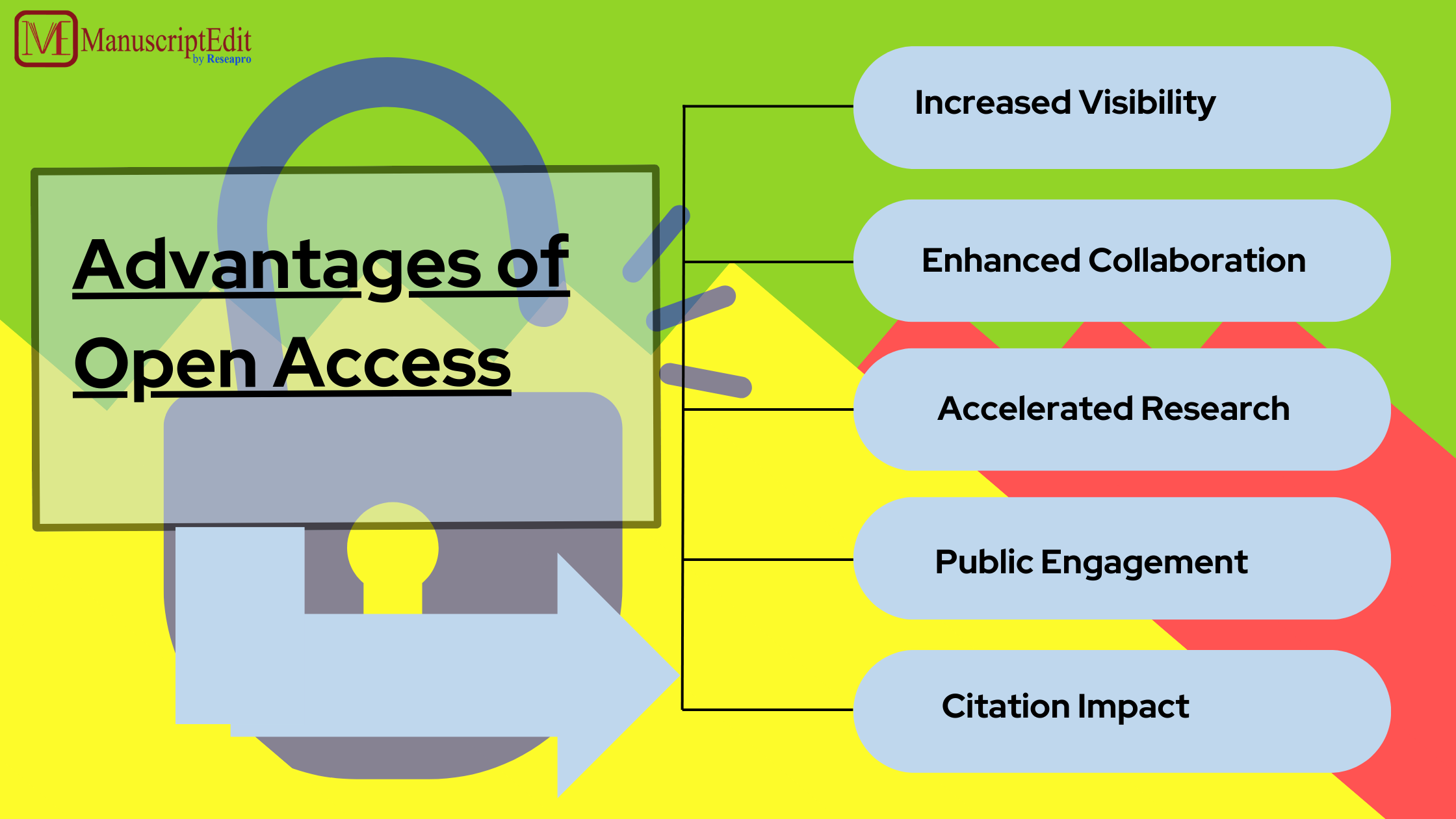|
Getting your Trinity Audio player ready...
|

Open Access and Scholarly Communication Landscape: Unleashing Open Access’s Impact, Key Challenges, and Opportunities
-
What is Open Access, and how has it gained momentum in the academic publishing landscape over the past two decades?
-
How did the traditional closed ecosystem of scholarly publishing operate, and what were the limitations associated with it?
-
What are the core principles of Open Access, and how do they challenge the traditional subscription-based model of publishing?
-
What advantages does Open Access offer, and how do these benefits impact both researchers and the public?
-
What are the different Open Access models, and how do they facilitate open sharing of research content?
In the world of academic publishing, the landscape is undergoing a seismic shift, and the catalyst for this transformation is Open Access (OA). Open Access is a movement that has gained significant momentum over the past two decades, reshaping how researchers, institutions, and the public interact with scholarly content. In this blog post, we will explore how Open Access is changing the scholarly communication landscape and the far-reaching implications of this paradigm shift.
The Old Paradigm
Traditionally, scholarly publishing operated within a closed ecosystem. Researchers conducted experiments and studies, wrote papers, and submitted them to academic journals. These journals, often owned by commercial publishers, operated on a subscription-based model. Libraries and institutions paid substantial fees to access these journals, creating a barrier to knowledge for those without institutional affiliations. As a result, valuable research was locked behind paywalls, limiting its reach and impact.
The Open Access Revolution
Open Access seeks to challenge this status quo by advocating for free, immediate access to scholarly works. In an Open Access model, authors retain copyright or grant licenses that allow their work to be freely shared, reproduced, and distributed. This has led to a fundamental shift in how research is disseminated and communicated.

Advantages of Open Access
Increased Visibility: Open Access publications are easily discoverable, as they are available to anyone with an internet connection. This broader visibility enhances the reach of research, making it more accessible to a global audience.
Enhanced Collaboration: Open Access encourages collaboration by eliminating access barriers. Researchers from different parts of the world can engage with and build upon each other’s work more easily.
Accelerated Research: By removing the lengthy subscription and peer-review processes, Open Access allows research to be disseminated faster. This is especially crucial in rapidly evolving fields.
Public Engagement: Open Access bridges the gap between academic research and the general public. Anyone can access and benefit from scientific knowledge, fostering scientific literacy.
Citation Impact: Open Access articles often receive more citations, as they are readily available to a wider audience, increasing the visibility and impact of research.
Open Access Models
Several Open Access models have emerged to support this revolution:
Gold Open Access: In this model, research is published in Open Access journals or platforms, and the costs of publication are covered by the author or their funding agency.
Green Open Access: Also known as self-archiving, researchers deposit their works in institutional or subject repositories, making them accessible after an embargo period.
Diamond Open Access: These journals are free for both readers and authors. They are often run by academic communities or institutions without commercial interests.
Hybrid Open Access: Some subscription-based journals offer authors the option to make their articles Open Access for a fee, allowing research to be published alongside subscription content.
The Changing Face of Scholarly Publishing
As Open Access continues to gain ground, it is reshaping the traditional publishing landscape in several ways:
Funding Models
The traditional publishing model relied on subscription fees paid by libraries and institutions. With Open Access, funding models are evolving. Institutions and funding agencies are increasingly investing in Open Access initiatives, covering publication fees for researchers. This shift ensures that researchers can share their work openly without incurring personal financial burdens.
Quality and Peer Review
Critics of Open Access have often raised concerns about the quality of OA journals. However, many reputable Open Access journals uphold rigorous peer-review standards, and the Open Access movement has driven discussions about transparency and openness in the peer-review process.
Academic Prestige
For years, publishing in prestigious, subscription-based journals was considered the gold standard in academia. However, Open Access journals are now challenging this hierarchy. Many Open Access publications have established strong reputations and impact factors, further validating the Open Access model.
Preservation and Archiving
Open Access also influences the preservation and archiving of scholarly content. Institutions and organizations have developed digital repositories to ensure the long-term accessibility of Open Access materials. The focus on preservation is crucial to the continued availability of research for future generations.
Open Access Repositories
Open Access repositories, whether institutional or subject-specific, have become essential in the scholarly communication landscape. These repositories provide a centralized platform for researchers to share their work, making it easier to find and access relevant studies.
Global Collaboration
Open Access enables international collaboration on an unprecedented scale. Researchers from diverse backgrounds and geographic locations can collaborate more easily and contribute to a global body of knowledge. This is particularly vital in addressing global challenges like climate change, health crises, and sustainable development.
Challenges and Concerns
While Open Access brings numerous benefits to scholarly communication, it also faces challenges and concerns that need to be addressed:
Sustainability
Sustainable funding models for Open Access publications and platforms are a significant concern. Without sustainable funding sources, the movement’s long-term viability could be jeopardized.
Quality Control
Ensuring the quality of Open Access publications remains a concern. Rigorous peer review and editorial standards are essential to maintain the integrity of scholarly communication.
Copyright and Licensing
Navigating the complex landscape of copyright and licensing in Open Access can be challenging. Authors and publishers must choose the appropriate licensing terms to balance openness with protection.
Inclusivity
To truly change the scholarly communication landscape, Open Access must address issues of inclusivity. This includes making research accessible to marginalized communities and removing barriers to participation for researchers in low-income countries.
Resistance to Change
Change is often met with resistance. Traditional publishers, researchers, and institutions may resist the transition to Open Access due to concerns about revenue, prestige, and established workflows.
Future Directions
The future of scholarly communication is intricately linked to Open Access. As the movement continues to grow and evolve, several key directions are emerging:
Improved Infrastructure
Investments in Open Access infrastructure, including repositories, platforms, and tools, will enhance the dissemination of research and ensure long-term accessibility.
Interdisciplinary Collaboration
Open Access encourages interdisciplinary collaboration and can lead to more holistic and innovative solutions to complex problems.
New Metrics and Impact Assessment
As Open Access becomes more prevalent, new metrics and tools for assessing the impact of research are needed. Alternative metrics (altimetric) are gaining prominence, offering a broader perspective on the impact of scholarly work.
Open Data and Reproducibility
Open Access is closely related to the open data movement, where researchers share not only their published work but also the underlying data and methodologies. This fosters transparency and reproducibility.
Ethical Considerations
Ethical considerations in scholarly communication, including issues related to authorship, conflicts of interest, and data integrity, will remain essential focal points in the Open Access landscape.
Conclusion
Open Access is not just a passing trend but a fundamental shift in how we share, access, and communicate scientific knowledge. It has already had a profound impact on the scholarly communication landscape, and its influence is likely to continue to grow. While challenges and concerns exist, the Open Access movement has the potential to democratize access to knowledge, foster collaboration, and accelerate the pace of scientific discovery. As the landscape continues to change, researchers, institutions, publishers, and the public must all play a role in shaping a more open and accessible future for scholarly communication.



